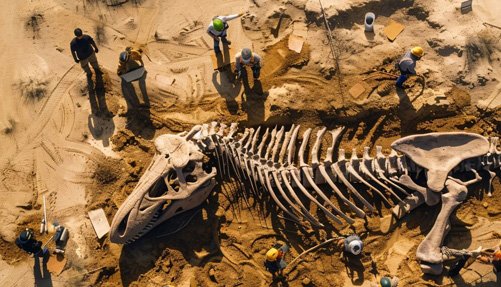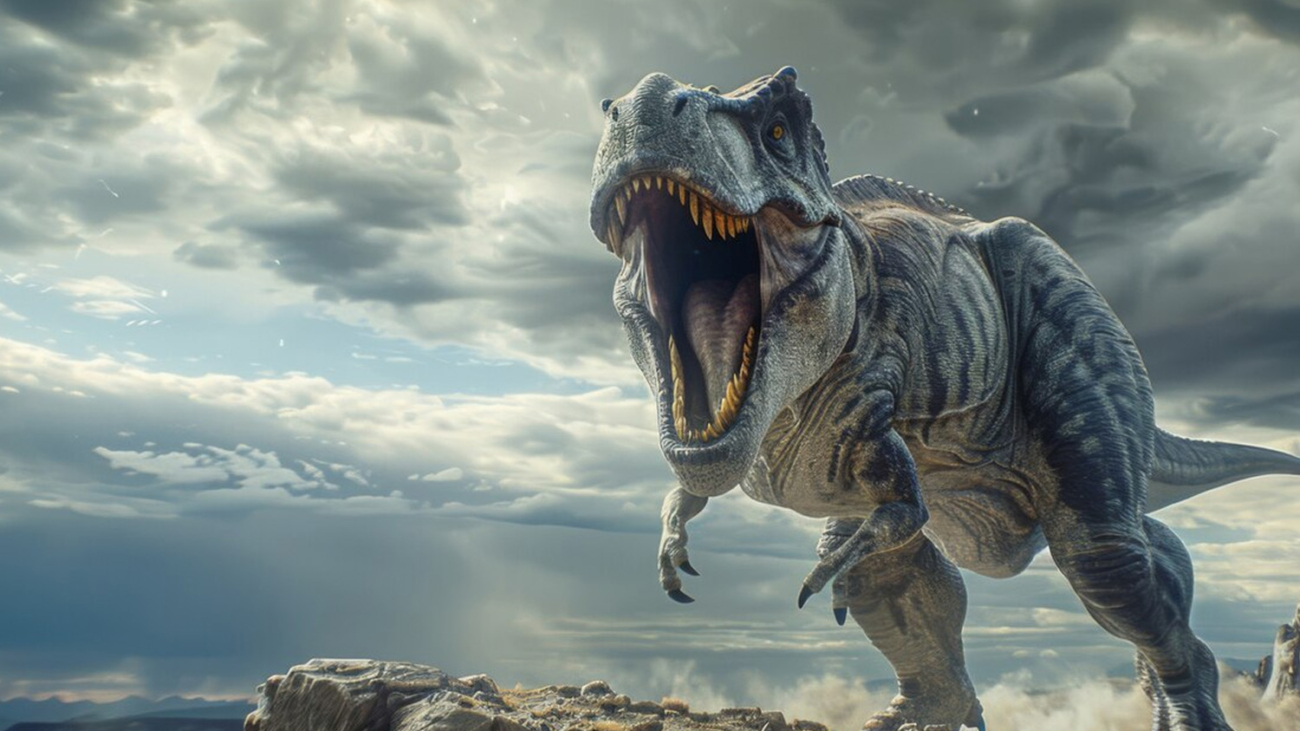Saying goodbye to dinosaurs and dodos and hello again to other species is fast becoming more than the mere stuff of science fiction. Owing to the progress achieved in genetic engineering and synthetic biology, reviving animals lost to the world could be made possible. Diverse colossal biosciences are involved in what are arguably the most epic sorts of de-extinction, including the woolly mammoth, dodo, and the thylacine, also known as the Tasmanian tiger. The firm has secured a new $200 million in funding, bringing the total funding to $435 million from $15 million in 2021. Masterminded by Ben Lamm, an entrepreneur, and George Church, a Harvard geneticist, Colossal attempts to re-engineer science and technology to bring these animals back to life after they went extinct.
Can We Truly Bring the Past Back to Life?
Expect the next decade to see animals that were once restricted to the annals of fossils or even pictures roaming the land. It is not just to clone these animals but to get them back into their original environment again. This push for de-extinction is not only humans venturing to satisfy their curiosity but also using it to stop the current loss of species.
Critics suggest that de-extinction might revive extinct animals and that a financial boost could provide enough funding for endangered species. With a focus on surpassing current abilities in biotechnology, these new technologies will also help maintain the current generation ecosystems, thus improving their ability to address the increasing climate change.
Why Do Some People Oppose De-Extinction Projects?

Even if it is desirable to have a chance to see a dodo or a mammoth again, some people consider de-extinction to be an unprofitable and unwise project. Some call into question the viability of these strategies, stating that money could be spent on other strategies that will find more tangible applications in conserving the world’s natural resources. They also now worry that science will only be able to clone the lost species instead of bringing them back to life.
Simple things like wondering who doesn’t want to see a dodo. Good God, I do. A mammoth. It’s like, wow, amazing,” the deputy co-chair of the Nuffield Council on Bioethics in the United Kingdom, Melanie Challenger added. Nevertheless, she embraced that term and opined that it has a wrong meaning and should not be used. This is not de-extinction; it is the creation of a new organism genetically modified to perform, at least in theory, a role of a living species. They are notasin that you are not taking anything back from the dead,” she paused to explain. “And still through the process, there various, relatively vicious ethical concerns.”
How Are Scientists Trying to Resurrect Extinct Species?
Nowadays, scientists are using clones, gene technology, and backbreeding to bring back the lost species of the earth. Clone provides an opportunity to create an animal with the same genetic makeup as the extinct one, but cloning has not been successful in Balkan and is often used. The first mammal clone, Dolly, the sheep, was born more than twenty-nine years ago despite facing some successes, such as cloning the black-footed ferret, an endangered species. Nonetheless, cloning is not expected to be fruitful in the next efforts to revive those animals that have already become extinct.
Another approach involves back breeding, which seeks to recreate lost traits of extinct species through selective breeding. Grazelands Rewilding, a Netherlands-based project, is breeding a modern-day equivalent of the aurochs, an ancient ox in prehistoric cave paintings. This giant animal went extinct in the 17th century, but the project’s seventh-generation Taurus cattle are now over 99% genetically similar to the extinct species. Over time, the Taurus have displayed physical and behavioural changes, including a darker coat colour and a heightened response to predators like wolves.
What Are Colossal Biosciences' Plans for the Mammoth, Dodo, and Tasmanian Tiger?
The company leading some of the most audacious projects in this field is Colossal Biosciences, which focuses on de-extinction. Back from extinction, the company plans to restore the woolly mammoth, dodo bird and a carnivorous marsupial known as the thylacine or Tasmanian tiger, which died out in 1936. For this, Colossal’s scientists are using CRISPR-Cas 9 to alter the genome of Asian elephants for the mammoth and fat-tailed dunnart for the Tasmanian tiger to create animals that are phenotypically identical to the extinct species.
The company is garnering backing from famous people such as director Peter Jackson, socialite Paris Hilton, footballer Tom Brady, golfer Tiger Woods, and investment firms such as Breyer Capital. The latest round of funding comes from TWG Global, the investment arm of Mark Walter, the owner of the Los Angeles Dodgers baseball franchise. Such fresh capital could allow Colossal to grow its de-extinction program, including even more species on the list of projects.
What Recent Milestones Have Colossal Biosciences Achieved?
Colossal has made significant strides in its quest to revive the mammoth. One of the key milestones was the creation of the first induced pluripotent stem cells (iPSCs) for Asian elephants. These specialized cells can be engineered to transform into any elephant cell, enabling researchers to model, test, and refine the genetic edits required to give Asian elephants the traits necessary for survival in cold climates.
Progress has been even faster with the Tasmanian tiger. Colossal scientists have successfully made over 300 genetic edits to the fat-tailed dunnart, the animal chosen as the base species and potential surrogate for thylacine. The company has also sequenced what is described as the highest-quality ancient genome ever obtained for any animal, offering a solid foundation for future genetic manipulation.
The resurrection of the dodo has proven the most challenging, however. Colossal has established a flock of Nicobar pigeons, the dodo’s closest living relative, acting as genetic donors to create primordial germ cells edited to display dodo characteristics. However, many of these breakthroughs have not been published in peer-reviewed scientific journals, meaning they haven’t undergone the usual level of scrutiny that accompanies most scientific research.
What Are the Ethical Concerns Surrounding De-Extinction?
Critics of Colossal’s work point out that de-extinction is not the same as truly reviving an extinct species. “To be clear, getting something that is 100% identical behaviorally, physiologically, genetically to a mammoth isn’t possible,” said Beth Shapiro, Colossal’s chief science officer. “Once a species is lost, it’s gone, and we need to be investing in making sure that things don’t become extinct.”
Despite this, Shapiro acknowledges that the biotech tools developed through de-extinction efforts could have broader applications in protecting endangered species and ecosystems. Colossal is already applying these tools to other conservation projects, including efforts to save the northern white rhino, one of the world’s most endangered species. The company is also developing a vaccine for a herpes-like disease that threatens the elephant population. Furthermore, Colossal has partnered with the conservation organization Re: wild to use biotechnology in their conservation projects.
How Can De-Extinction Help Address Climate Change and Ecosystem Restoration?
One of Colossal’s most ambitious goals for the woolly mammoth is to help mitigate climate change. The company envisions a world where elephant-mammoth hybrids roam the Arctic permafrost, compressing snow and grass, which would slow the thawing of permafrost and prevent the release of harmful carbon. However, experts are divided on the feasibility of such an impact. Christopher Preston, a professor of environmental philosophy at the University of Montana, argues that the idea of cold-adapted elephants making a meaningful impact in such a rapidly warming region is “absurd.” Still, he recognizes the potential value of restoring lost species to fragile ecosystems, citing the work of Grazelands Rewilding, whose Taurus cattle have helped restore open landscapes where other species can thrive.
As de-extinction continues to evolve, the debate over its benefits and risks will likely grow more intense. Whether these revived creatures can fulfil their role in preserving biodiversity and combating climate change remains to be seen. Still, one thing is clear—this field of science is rewriting the boundaries of what’s possible for the future of our planet.

